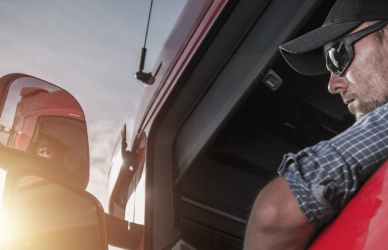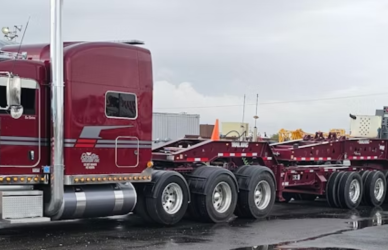Peterbilt Motors spared no expense when launching their latest model – the Model 589. The highlight of the launch was the exclusive Peterbilt-only Pride & Class Truck Show, featuring over 200 heritage models. The cavernous Texas Motor Speedway was rented out for the event, and more than 3,000 attendees – including VIPs, employees, and fans off the street – were treated to a Southern rock concert.
And then came the truck – a true beast that continues the tradition of Peterbilt’s long-hood, squared-grille style. With its 7-inch vertical chrome exhausts and 15-inch-diameter chrome air cleaners, this is the ultimate trucker’s truck.
Peterbilt has been producing high-quality trucks for nearly 70 years, with the Model 589 joining the ranks of iconic models like the 351, 359, 379, and the current-generation 389.
“Over time, we have had evolutions of our traditional trucks, not revolutions,” Jason Skoog, Peterbilt general manager, said during the Tuesday evening reveal that included a concert by Palestine, Texas-based Whiskey Myers. His words were followed by fireworks lighting the night sky above the track’s jumbotron video screen.
At the event, Skoog acknowledged that the diesel-powered truck could be on its last model.
“If you go back through our history, it’s every 15 to 20 years [that] we redo the traditional Peterbilt truck. So this will carry us at least into the 2040 time frame,” he said. “You can never predict the future, but I would say ‘quite possibly’” it is the last of an era.
Peterbilt’s Model 589 and Legendary special edition took ten years to develop due to competing priorities and securing necessary components for a wider cab. Despite these challenges, Peterbilt has modernized its entire heavy- and medium-duty lineup. The 567, which was introduced in 2013, is the oldest product in their current portfolio.
Peterbilt has made some changes to its heavy-duty models, the Model 367 and Model 379, by increasing the width of the cab from 6 feet, 2 inches to 6 feet, 9 inches. This extra space between the seats makes it easier for drivers to access the sleeper cab without twisting or turning. Not only that, but the company is now able to build three trucks on a single platform, saving them design time and significant capital expense.
Moreover, the updated version boasts LED running lights, a V-style visor, and brighter marker lights across the top. And, for safer driving, the new 589 also offers the Bendix Wingman Fusion suite of safety system technologies that include forward collision warning and lane departure warning.
Peterbilt’s Model 389 has been a hit, with over 110,000 units sold since 2007. But now, a new flagship truck – the Model 589 – is joining the ranks at the Denton, Texas plant. This 43-year-old facility currently produces 201 trucks per day on two shifts, including the popular Model 579 and 567.
Meanwhile, sibling truck brand Kenworth has its own high-end offering in the chrome-laden W990. Some of the new 589s will find their way there, but they’re also expected to be snapped up in large quantities by smaller fleets and owner-operators. In fact, Peterbilt sells three trucks to larger fleets for every one purchased by smaller operations.
As production of the Model 389 winds down at the end of the year, the Model 589 will take its place in January. The first batches will feature special interior badging and sequential numbering, making them even more coveted by truck enthusiasts. Stay tuned for more updates from Peterbilt and the exciting world of heavy-duty hauling.
The 589 Legendary proved to be a smooth and quiet ride during two spins around Texas Motor Speedway’s 1.5-mile track. With improved side mirrors and video camera technology on the way, this cab offers a pristine view of the road ahead. Even better, the sleeper compartment allows for easy conversation without raising one’s voice over the engine noise. And with effortless steering and a responsive wheel, it’s a great choice for any driver.
Source: FreightWaves











